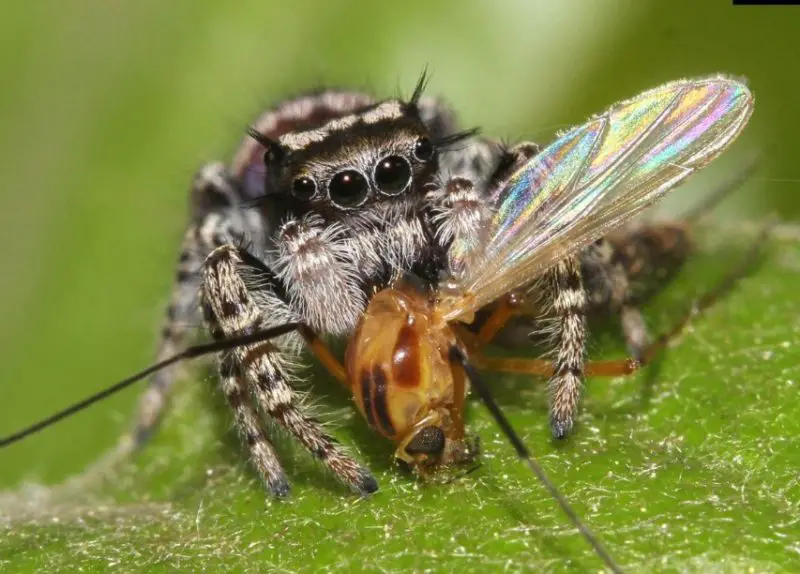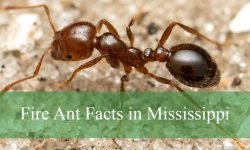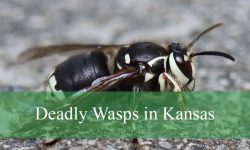Jumping spiders, belonging to the family Salticidae, are a fascinating group of arachnids renowned for their distinctive leaping ability and vibrant colors. As popular pets, they have garnered attention not only for their adorable appearance but also for their manageable care requirements. One crucial aspect of keeping jumping spiders is understanding their dietary needs.
So, what do jumping spiders eat? This article aims to explore the dietary habits of jumping spiders in both the wild and captivity, providing insights into their nutritional requirements and feeding practices.
Jumping Spiders in Their Natural Habitat

Diet in the Wild
In their natural environments, jumping spiders exhibit a varied diet primarily consisting of insects. These spiders are opportunistic hunters, preying on a variety of small bugs that are typically smaller than themselves, though they can tackle larger prey on occasion. Common food sources include:
- Flies: Known for their agility, jumping spiders use their impressive jumping skills to capture low-flying insects like houseflies and fruit flies.
- Beetles: Many species of beetles are also part of their diet, though jumping spiders must be cautious of the hard exoskeletons that can protect beetles from being easily consumed.
- Ants: While they are small, jumping spiders may occasionally catch ants. However, this is risky due to the potential for ant bites, which can be harmful.
- Other Small Insects: Jumping spiders are not picky eaters and will consume any small insect that they can successfully hunt down.
Adaptability in Diet
One of the remarkable aspects of jumping spiders is their adaptability. Depending on their habitat, the availability of food sources can vary significantly, leading to changes in their diet. In environments where certain insects are abundant, jumping spiders will adjust their feeding habits accordingly. Interestingly, while they are primarily carnivorous, some species have been observed consuming nectar and pollen, a rare trait among spiders.
Feeding Jumping Spiders in Captivity
Common Food Sources
For pet owners wondering, “What do jumping spiders eat?” the answer is straightforward: they should be provided with a diet that closely mimics their natural eating habits. Common feeder insects suitable for jumping spiders include:
- Crickets: Arguably the most popular choice for feeding jumping spiders, crickets are nutritious and widely available. They are relatively easy to care for and can be purchased in bulk. However, it’s essential to ensure that the crickets are small enough for your spider to handle safely.
- Benefits: Nutritious, widely available, and easy to care for.
- Drawbacks: Larger crickets can pose a threat to smaller spiders, particularly those that are molting or vulnerable.
- Flies: Another excellent food source, flies are not only abundant but also favored by many jumping spider species. They can be bought in bulk and are easy to feed.
- Benefits: Inexpensive and nutritious, with no significant drawbacks.
- Drawbacks: Ensure that the enclosure allows your spider to reach flying prey.
- Fruit Flies: Ideal for spiderlings and smaller jumping spiders, fruit flies are easy to raise and maintain.
- Benefits: Small and nutritious, suitable for young spiders.
- Drawbacks: They may not be sufficient for adult jumping spiders, which may refuse to eat them.
- Roaches: Dubia roaches and similar species can diversify a jumping spider’s diet. They are nutritious and easy to breed, making them a sustainable food source.
- Benefits: Nutritious and easy to keep alive; they pose little threat to jumping spiders.
- Drawbacks: Some roaches can be too large, so careful selection is necessary.
- Mealworms: Mealworms can serve as a supplementary food source, though they should not comprise the main diet due to their high-fat content.
- Benefits: Cheap and easy to keep.
- Drawbacks: High in fat and lack sufficient nutritional value if fed alone.
Feeding Practices
When feeding jumping spiders, it’s crucial to consider their size and life stage. For adult jumping spiders, live prey should be dropped into the enclosure, allowing them to hunt naturally. However, there are specific situations where this method may not be ideal:
- Post-Molt: After molting, spiders are fragile and vulnerable, so offering pre-killed prey is advisable.
- Older Spiders: Older jumping spiders may be less agile, making it safer to provide immobilized or pre-killed insects.
Feeding Frequency
Feeding frequency can vary based on individual spiders. Generally, jumping spiders eat every 2 to 3 days, while spiderlings may require food daily or every other day. Monitoring your spider’s eating habits will help you determine the best schedule.
Foods to Avoid
While jumping spiders are not picky eaters, some foods should never be offered due to safety concerns. These include:
- Ants: Despite their small size, ants can inflict painful bites and carry toxins that may harm jumping spiders.
- Beetles: Many beetles have hard shells that are difficult for jumping spiders to penetrate. Some beetles also have pincers that can inflict serious injuries.
- Large Crickets: While smaller crickets are ideal, larger ones can bite and severely injure jumping spiders.
Special Considerations for Spiderlings
When it comes to feeding spider spiderlings, smaller food sources are essential. Spiderlings have similar nutritional needs as adults but require food that is much smaller. Suitable options for spiderlings include:
- Flightless Fruit Flies: Perfect for their size and easy to manage.
- Pinhead Crickets: Small enough to prevent overpowering the spiderling.
Feeding frequency for spiderlings should be high, with at least 1 to 3 feedings per week. As they grow, it’s vital to transition them to larger prey to ensure they continue to receive adequate nutrition.
Hydration Needs
An often-overlooked aspect of spider care is hydration. Jumping spiders, like all living creatures, need water to survive. They primarily obtain moisture through their food, but additional hydration methods are crucial. Here are some tips:
- Water Bowl: Place a small dish of water in the enclosure. This will not only provide a drinking source but also help maintain humidity levels.
- Regular Cleaning: Clean and refill the water bowl frequently, as spiders can make their water dirty quickly.
- Misting: Mist the enclosure a few times a week to maintain appropriate humidity levels. This is especially important, as jumping spiders can quickly dehydrate without proper moisture.
Conclusion
Understanding what jumping spiders eat is crucial for their health and well-being, whether in the wild or in captivity. By providing a varied diet rich in nutritious insects, pet owners can ensure their jumping spiders thrive. Regular observation and adaptation to individual feeding habits will help create the ideal feeding routine. Moreover, attention to hydration is essential for maintaining a healthy spider environment.
In summary, feeding jumping spiders is an enjoyable aspect of pet care that can foster a deeper connection with these fascinating arachnids. With proper nutrition and care, jumping spiders can live healthy, vibrant lives, making them delightful companions for spider enthusiasts everywhere.






